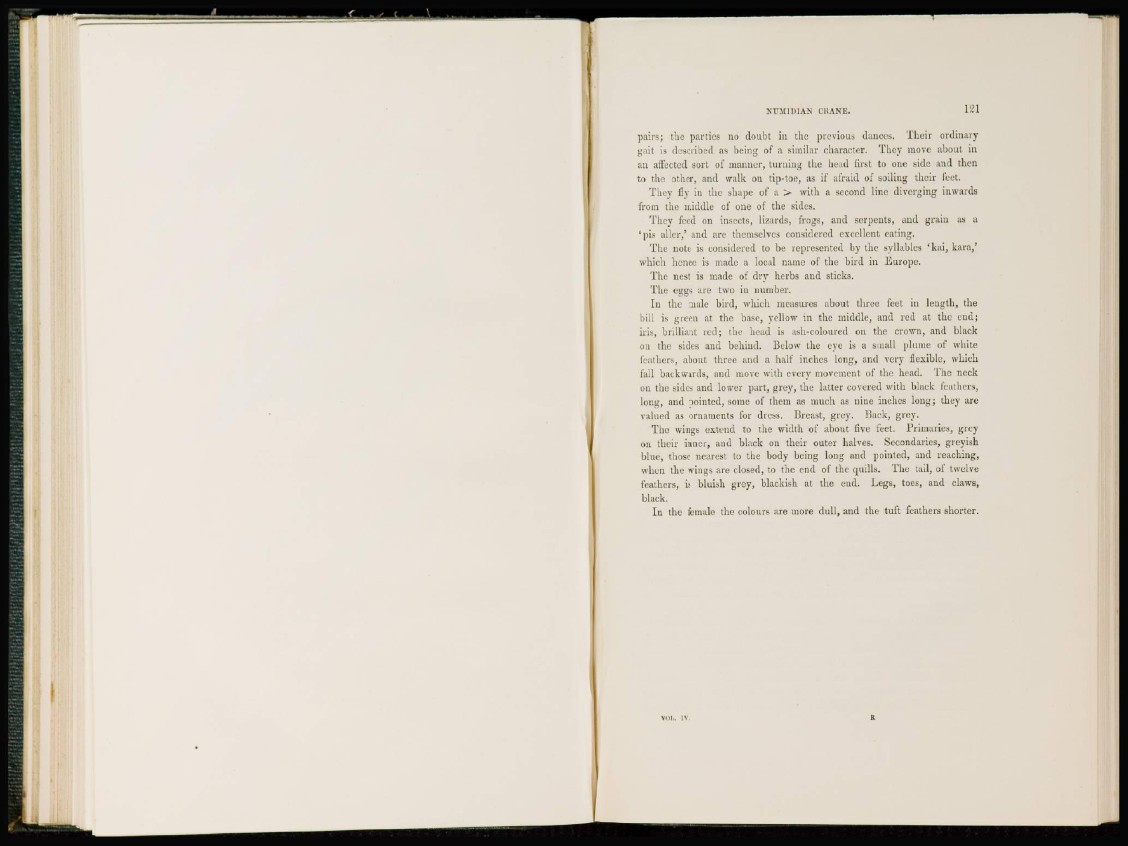
Ts UM! 1)1 AN CHANE. 121
pairs; the parties no doubt in the previous dances. Their ordinary
gait is described as being of a similar character. They move about in
an affected sort of manner, turning the head first to one side and then
to the other, and walk on tip-toe, as if afraid of soiling their feet.
They fly in the shape of a > with a second line diverging inwards
from the middle of one of the sides.
They feed on insects, lizards, frogs, and serpents, and grain as a
' p i s allcr,' and are themselves considered excellent eating.
The note is considered to be represented by the syllables ' k a i , kara,'
which hence is made a local name of the bird in Europe.
The nest is made of dry herbs and sticks.
The eggs are two in number.
In the male bird, which measures about three feet in length, the
bill is green at the base, yellow in the middle, and red at the end;
iris, brilliant red; the head is ash-coloured on the crown, and black
on the sides and behind. Below the eye is a small plume of white
feathers, about three and a half inches long, and very flexible, which
fall backwards, and move with every movement of the head. The neck
on the sides and lower part, grey, the latter covered with black feathers,
long, and pointed, some of them as much as nine inches long; they are
valued as ornaments for dress. Breast, grey. Back, grey.
The wings extend to the width of about five feet. Primaries, grey
on their inner, and black on their outer halves. Secondaries, greyish
blue, those nearest to the body being long and pointed, and reaching,
when the wings are closed, to the end of the quills. The tail, of twelve
feathers, is bluish grey, blackish at the end. Legs, toes, and claws,
black.
In the female the colours are more dull, and the tuft feathers shorter.